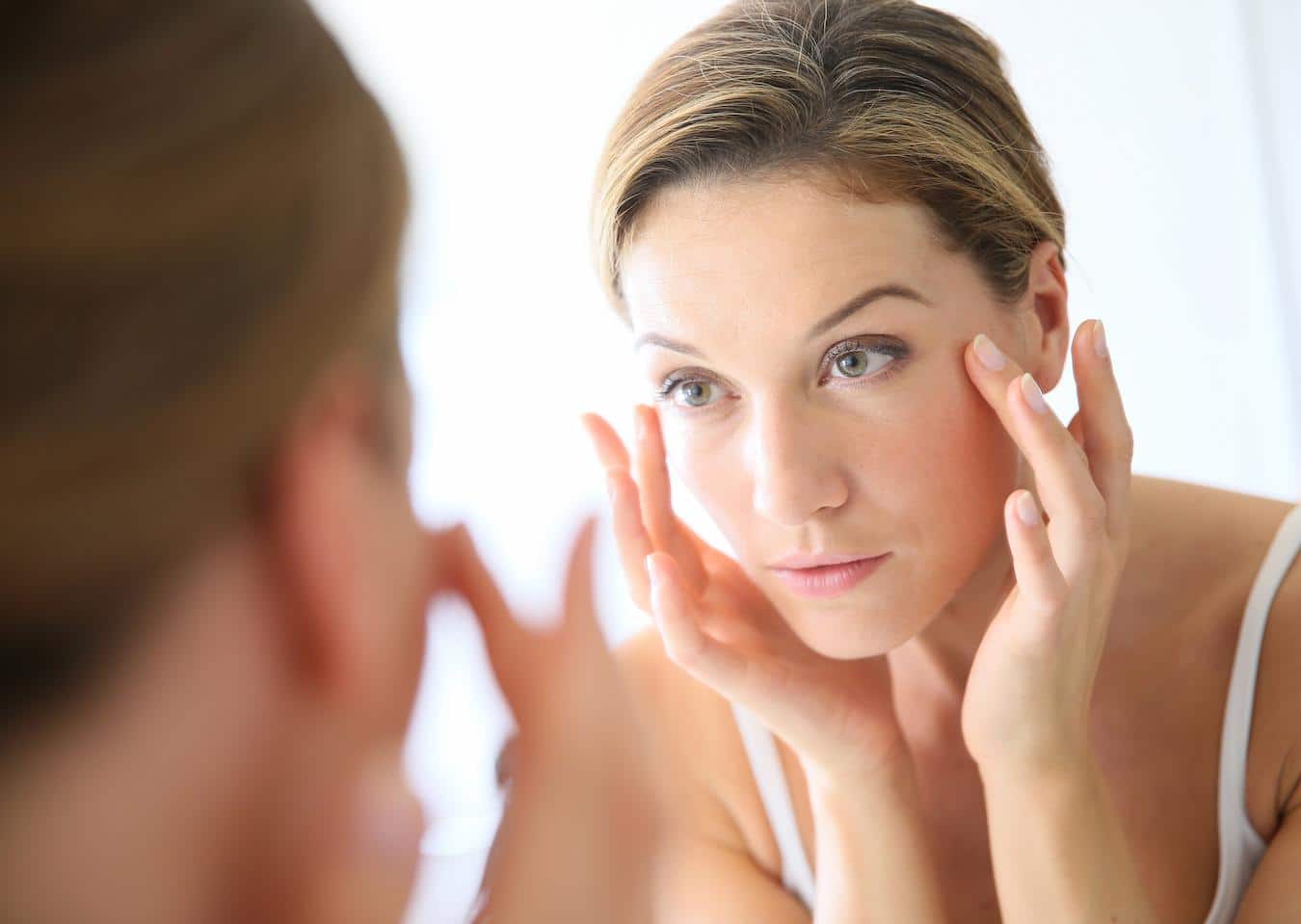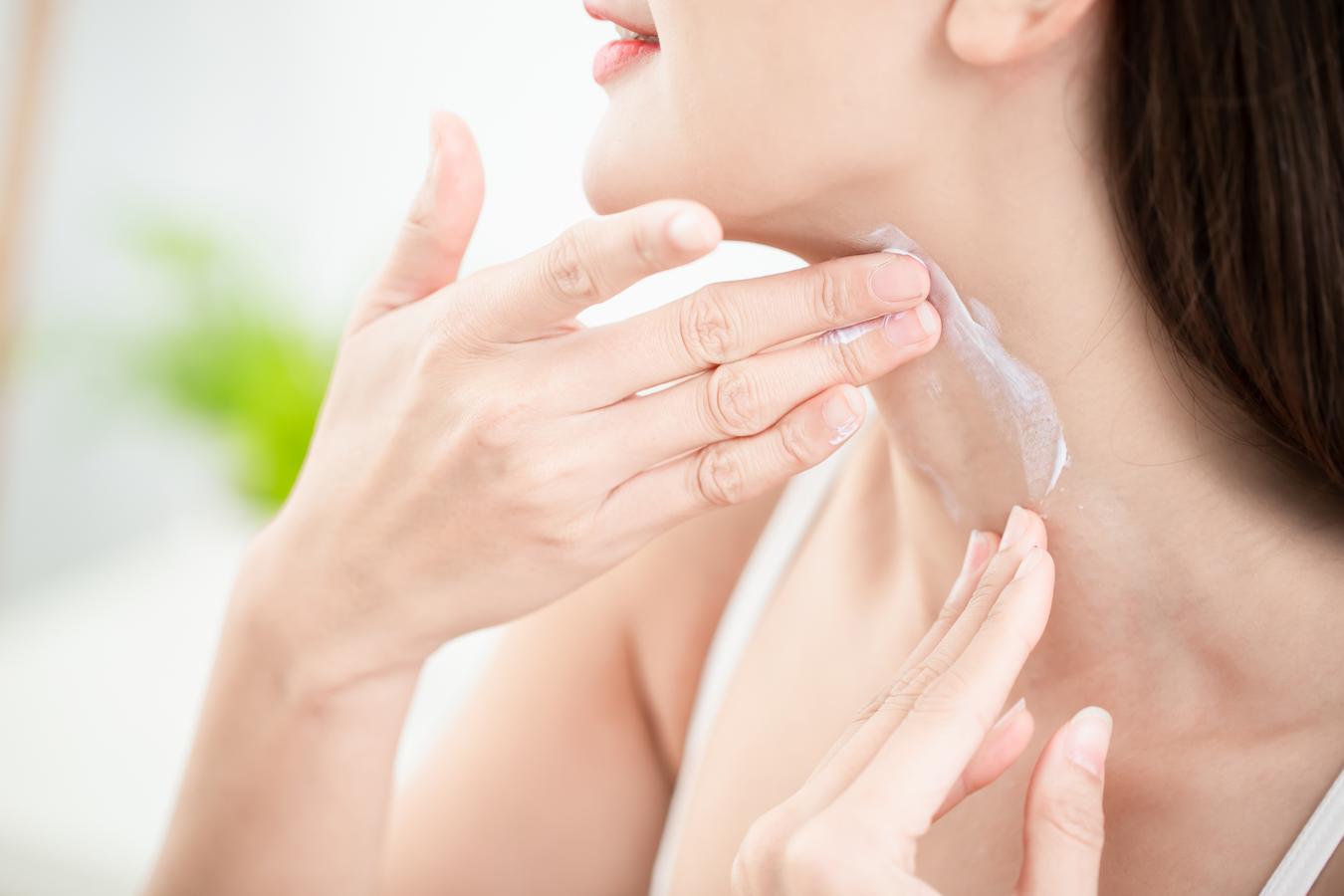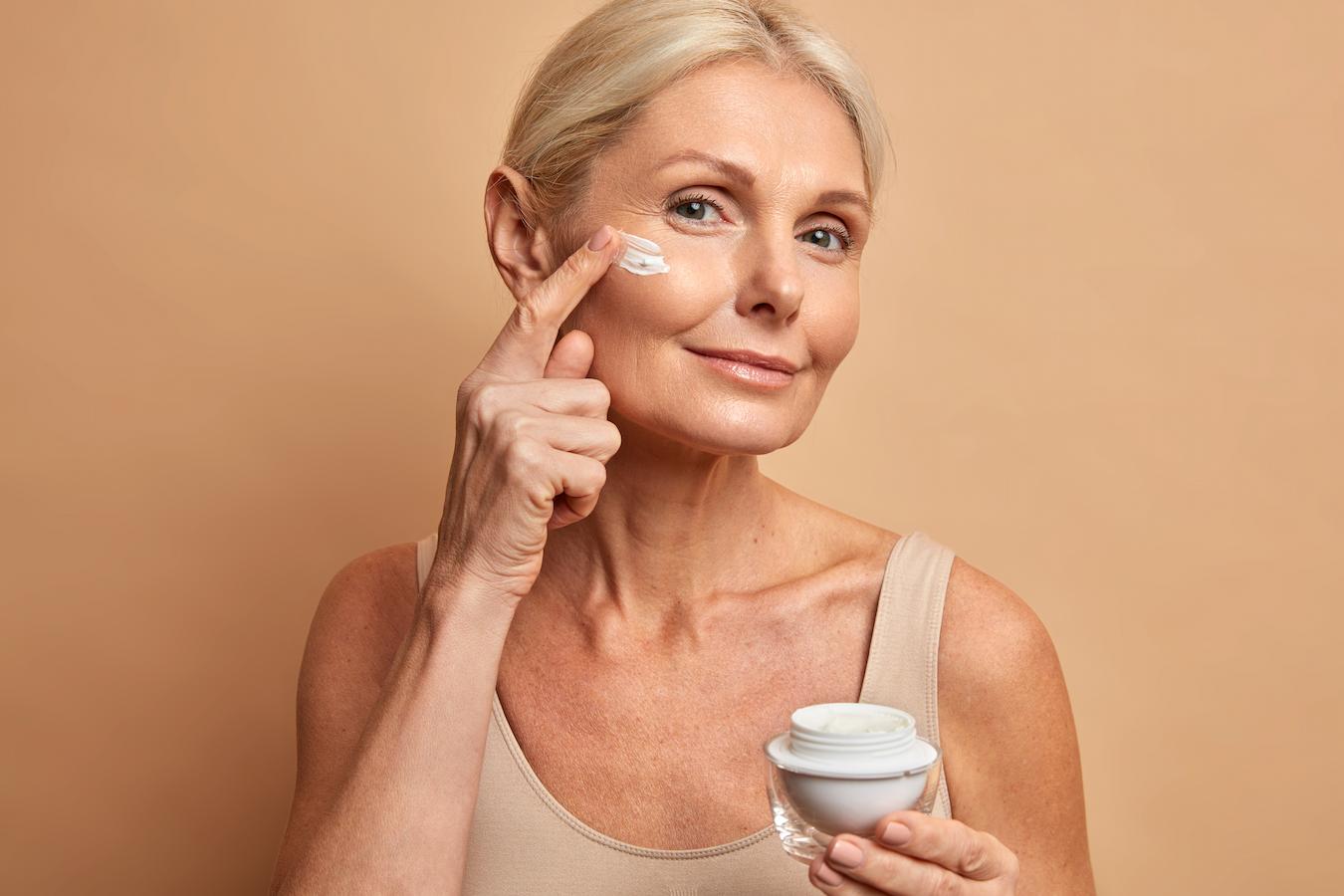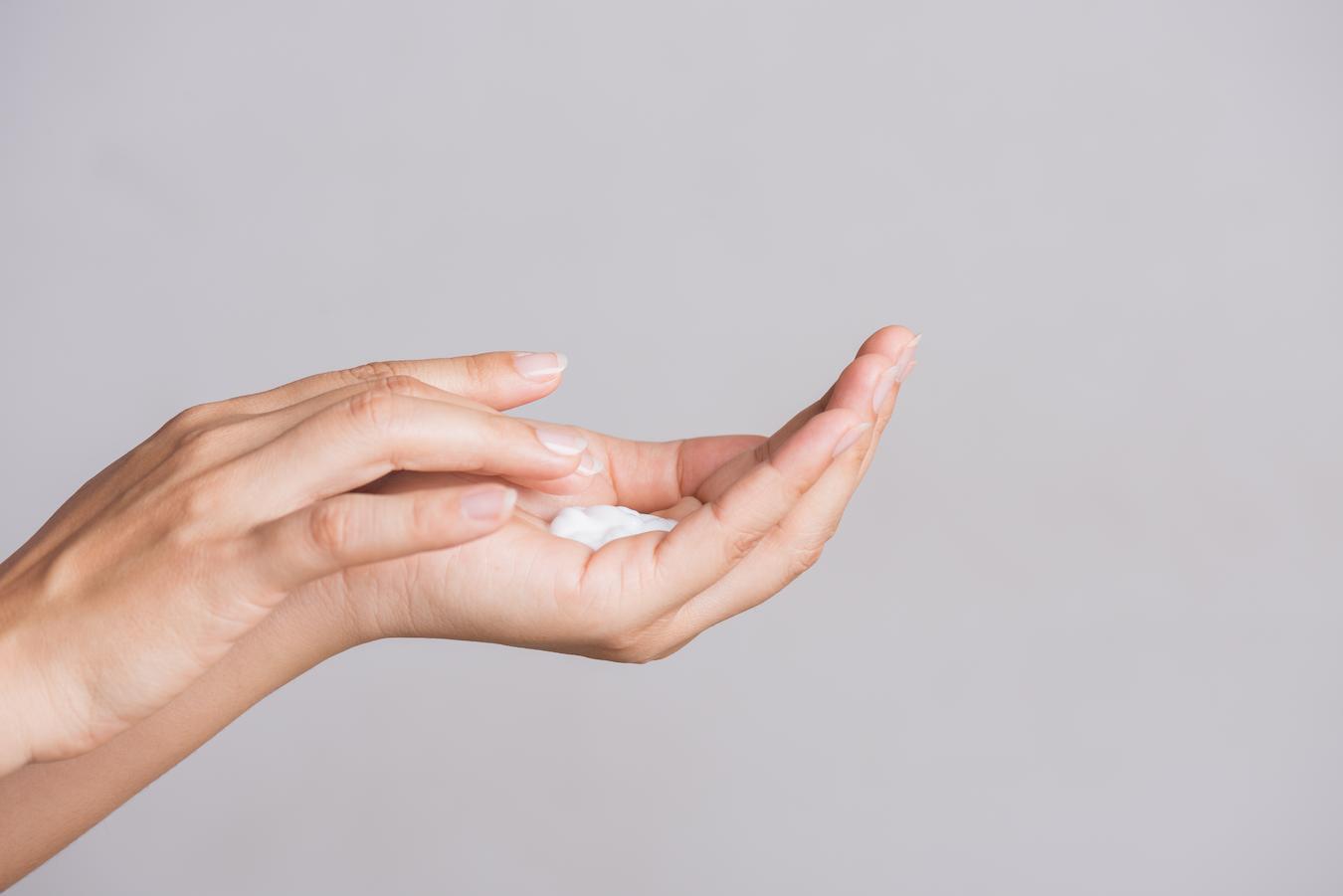How To Apply Moisturizer On Your Face
Moisturizers have been a common household item for many years. In modern households, it is the most commonly used skincare product. Surprisingly there are still many people that do not use moisturizers or if they do, don’t know how to apply them properly.
Moisturizer is an essential item for anyone with normal skin, combination skin, and yes, even sensitive skin. Those who incorporate moisturizing into their daily skincare routine experience fewer signs of aging and younger-looking skin.

On the other hand, those who don’t use facial moisturizer experience a faster rate of aging due to dryness. Simply put, a face moisturizer is one of the most important elements in your skin care routine!
See Related: What is the Most Effective Anti-Aging Treatment?
4 Different Types Moisturizers
There are many different types of moisturizing products, each with its own benefits for your skin. Understanding the different forms will help you choose what best suits your facial moisturizer needs. The most common types include Humectants, Occlusives, Ceramides, and emollients.
1. Humectants
Humectants help the skin attract and retain moisture. They’re good for treating dry skin and reducing fine lines and wrinkles. There are also anti-aging benefits because humectants preserve the elasticity of the skin. By moisturizing, they can reduce or prevent age spots from forming.
Some common humectants include;
* Glycerin: Glycerin attracts water from the air and draws it deep into the skin’s surface. It has an anti-inflammatory effect on the skin and is found in moisturizers for skin prone to sensitivities.
* Hyaluronic acid: Hyaluronic acid is a humectant (moisture-binding ingredient) that also contains antioxidants and lubricating properties. A hyaluronic acid moisturizer is great for dry skin and works well on skin that is sensitive to products as it is non-comedogenic, meaning it won’t clog pores. It also activates cells beneath the skin barrier.
2. Occlusives
Occlusives work by forming a barrier over the skin to prevent water from escaping. Occlusive agents are often heavy and greasy because they form a physical barrier on top of the skin to prevent moisture loss.
Some common occlusive agents are Petrolatum, Mineral oil, and Squalene.
3. Ceramides
Ceramides are lipids found naturally in the skin that help repair the cracks in our outermost layer which is called the stratum corneum.
Some common ceramides are Cera Bellina, Ceramide 1, 3, 6-II, and Phytosphingosine.
4. Emollients
Emollients help other ingredients penetrate into the skin better by smoothing out any roughness on the top layer of skin to improve texture and reduce fine lines.
Some common emollients are Shea butter, Jojoba Oil, and Tocopherol.
8 Benefits Of Using A Daily Moisturizer
1. Improves Skin Tone
Cream-based moisturizers contain ingredients that will help even out your tone, diminishing the appearance of blemishes, age spots, or other discoloration in the process.
2. Prevents Dryness
Using a moisturizer on a daily basis is one of the easiest ways to prevent dryness because it locks in the moisture your skin naturally produces.
3. Keeps Skin Plump And Smooth
Moisturizing will prevent reduce wrinkles by keeping the skin plump and smooth. The best moisturizers should contain humectants like Hyaluronic Acid, Squalene, Urea, Glycerine, or Lactic Acid, which will help to draw moisture from the air and lock it into your skin so you can maintain a more youthful appearance.
4. Keeps Skin Hydrated
A moisturizer is one of the most important products in your daily skincare routine because it will continuously hydrate your skin throughout the day, ensuring that your skin never becomes dehydrated or dry.

5. Prevents Flakiness And Peeling
When you don’t moisturize enough, the skin on your face will start to flake and peel, which can lead to uneven patches. By applying a daily moisturizer, you’ll prevent this from happening in the future.
6. Prevents Tired-Looking Skin
Moisturizing is the only way to hydrate your skin from deep within, which makes it a great solution if you have visible dark circles under your eyes or puffy bags that make you look tired and stressed out. The best moisturizers will contain caffeine to help reduce puffiness and minimize visible dark circles.
7. Prevents Sunburn And Inflammation
Daily moisturizing is one of the most important steps in your daily skincare routine because it will protect your skin from sun damage like redness, inflammation, and irritation caused by UV exposure.
8. Keeps Skin Soft And Supple
Moisturizers will help keep skin soft and supple, but there’s a catch: it has to be the right moisturizer. You can’t just use any old lotion or cream marketed as a “moisturizing” product because most of them are designed for those whose skin type requires gentle products and won’t provide you with the hydration you need.
If you have normal to dry skin, look for a moisturizer designed for normal to dry skin types, and if your skin is oily, choose an oil-free moisturizer that’s specifically formulated for acne-prone or oily skin types.
Bonus: What Is The Best Alpha-Hydroxy Product?
Key Ingredients To Look For In A Moisturizer
There are a number of key ingredients to look for when choosing a moisturizer. They will need to be evaluated based on your skin type and the main goal you want it to accomplish. They include:
1. Vitamins and Antioxidants
Antioxidants like Vitamin C and E help to reduce fine lines and wrinkles, while Vitamin A helps increase collagen production which leads to firmer skin. It also has the ability to banish blemishes, unclog pores, refine skin texture, diminish age spots and improve skin texture.
2. Firming agents
A firming agent works by stimulating the production of elastin and collagen which leads to firmer skin.
3. Hydrating agents
These types of ingredients will bind water deep within the skin, restoring elasticity and making your skin look more hydrated. And skin hydration makes your skin look and feel more youthful.
4. Barrier repair agents
Repairing any damage on the outermost layer of the skin helps to keep moisture in and protects you from dryness. (Often found in night creams.)
5. Anti-inflammatory agents
Anti-inflammatory agents help reduce redness and inflammation that occurs when your skin is overproducing oil, which leads to blemishes and blackheads.
What To Look For In A Moisturizer
The best moisturizers will have a combination of ingredients working together to accomplish all of the above benefits. Here are some key factors to look for in a moisturizer:
1. Skin Type
It is important to choose your moisturizer based on skin type, not the goal you want it to achieve. For example, if you have oily skin, an oil-based moisturizer is not the best choice because it will only lead to more oil production. Instead, choose a cream or ointment-based formula for oily skin.
2. Dry Skin
A lightweight cream that is packed with powerful humectants like Glycerin and Hyaluronic acid will work best on dry skin.
3. Sensitive Skin
Sensitive skin has thinner, more delicate skin cells that are susceptible to redness and stinging ingredients found in some moisturizers. Look for a lotion or gel-based formula free of fragrance or color additives. For extra comfort, choose an ointment-based product because they tend to be less greasy.
4. Mature Skin
A moisturizer designed for mature skin should contain ingredients that increase elasticity and firmness in the skin like retinol, peptides, or niacinamide. You can also look for anti-aging agents like Vitamin C and E, which help to undo the damage done by sun exposure and the aging process.

5. Skin With Pigmentation
If you have discoloration or dark spots, look for a moisturizer that contains Vitamin C to help fade these darkened areas of the skin. You can also use an exfoliating product like an Alpha Hydroxy Acid (AHA) serum once or twice a week to remove any dead skin cells that are making skin look dull.
6. Acne-Prone Skin
Products containing pro-reducers like Salicylic Acid, Vitamin B3, and Retinol will reduce inflammation and help shrink the size of your pores where acne forms. You can also use a product with Benzoyl Peroxide to treat existing acne.
7. Sun Damaged Skin
If you have sun damage, look for a moisturizer that contains an SPF of at least 30 to provide protection from the harmful UV rays of the sun that can accelerate aging and cause skin cancer. You can choose a cream or gel-based formula to better match your skin type and texture preference.
8. Sensitive Skin
A moisturizer designed for sensitive skin should contain ingredients that protect your skin from redness and irritation like green tea, chamomile, Ginkgo Biloba Extracts, licorice root, aloe vera, or feverfew. You can also choose an oil-free formula to avoid any unnecessary irritation.
When Should You Apply Moisturizer?
There are 7 best times to apply moisturizer. You’ll need to start applying your moisturizer everyday, especially if you are hoping to put an end to skin issues. Make these steps your daily moisturizing routine!
1. After washing your face
Yes, you need to wash your face! If your skin is feeling especially dry after washing your face, use a moisturizing cleanser that will provide an extra boost of hydration. You can also store bottles of moisturizer in the bathroom so you have it on hand any time you need it. Having dehydrated skin defeats the purpose of applying a skin care routine, so be sure to use a facial moisturizer immediately after washing!
2. In the Morning
After you cleanse your face in the morning, apply a moisturizer that contains SPF to protect your skin from sun damage throughout the day. If your moisturizer doesn’t already contain sunscreen, you can also buy separate sunscreen designed specifically for the face. Just make sure it has an SPF of 15 or higher so you get adequate protection.
3. When not applying makeup
Applying moisturizer to your face is even more important when you’re not applying any makeup because the skin on your face will be bare and more susceptible to dryness. If you do choose to apply makeup after moisturizing, make sure you wait until it dries before doing so. Also, don’t forget to apply some form of sun protection in addition to your facial moisturizer. Better yet, get a face cream that contains SPF.
4. Before bedtime
At night, remove your makeup and cleanse your skin before applying a moisturizer that’s rich in antioxidants and contains anti-aging ingredients because you’ll give your skin ample time to soak it all up while you sleep. If you have very oily skin, choose an oil-free formula that won’t make your face look greasy during the day. If you have combination or dry skin, look for a lightweight cream that contains nourishing oils and butter to keep your skin feeling hydrated throughout the night.
5. When Breaking Out
When you have acne, choosing the right moisturizer is crucial because an oil-based formula will only worsen your breakouts by clogging your pores. Instead, look for a gel-based cream that will hydrate while also drying up any pimples so they heal faster and don’t leave behind scars.
6. Before And After Sun Exposure
If you plan on spending a lot of time outside in the sun, it’s important to apply a moisturizer with SPF before going out so your skin is fully protected from burning and damage caused by the sun. If you already have a sunburn, choose an aloe vera-based lotion because it’ll soothe any painful redness or inflammation.
7. When traveling
If your skin is especially dry due to the high altitude of an airplane, apply a regular moisturizer 10 minutes before you land to keep your face feeling hydrated throughout the flight. If you’re taking a long drive, moisturize every few hours because heat from the sun can cause your skin to become dehydrated.
How Best To Apply For Maximum Benefits
There are several best ways to apply moisturizer:
1. With clean hands
It’s important to use clean hands when applying anything to your face or any other part of your body. You don’t want dirt from your skin contaminating the moisturizer and ruining its effectiveness, so make sure you always wash your hands first. Use your ring finger to apply with ease.

2. In upward motions
Every time you apply moisturizer, make sure to gently lift your skin with your hands and use a soft patting motion so the lotion fully sinks into your skin. Applying moisturizer with circular motions won’t enhance the penetration of ingredients and will only irritate your skin further.
3. In downward motions
Just like when you apply cream, make sure to use soft patting motions when removing your makeup at night or washing your face in the morning so you don’t irritate your skin further.
4. On damp skin
When applying moisturizer on wet skin after a shower, make sure to pat your skin dry with a towel first. Water on your skin will dilute the cream’s effectiveness, so only apply it once you’re completely dry.
5. On clean skin
If you want to maximize the benefits of your moisturizer, make sure to always apply it directly onto cleansed skin instead of a dirty or makeup-covered face. Or even use a jade roller! This will ensure that the ingredients are absorbed into your skin and they don’t become wasted on top of impurities.
8. With proper technique
As with any beauty regimen, make sure you know what you’re doing before applying a cream to your face because an improper application can result in further damage to your skin. For example, if you apply moisturizer in upward motions but leave it on overnight, the dirt and debris from your skin will cause breakouts.
9. In a circular motion
To further enhance the ingredients of any moisturizer, dab a small amount onto your fingertips before applying it to the palms of your hands and gently massaging it onto your face. This will help to activate ingredients that require heat for activation and give them a boost of nourishment.
10. In a zigzag motion
If you have a scar, dark spot, or any other blemish on your skin, apply moisturizer in a zigzag motion so the moisturizer doesn’t sit on top of it. This will prevent your pores from becoming clogged, which can lead to further damage and help the blemish heal faster.
How Not To Apply
There are several ways in which you should never apply moisturizer:
1. Around Your Eyes
Moisturizers aren’t meant to be used around your eyes because they can cause further skin damage and premature aging – that’s what vegan eye cream is for! Since the skin around your eyes is much thinner than the rest of your body, applying moisturizer won’t help it at all and will just result in clogged pores, breakouts, and bacteria growth that causes infections.
2. On Broken Skin
If you have a cut or irritation on your face, never apply moisturizer because it will trap bacteria inside and cause further damage to your skin. You should also avoid applying after waxing, plucking, peeling, or exfoliating your skin since any of these can also irritate the surface of your skin. If you’re using acne medication on your skin, make sure to wait until it has completely dried before applying.

3. Over Active Acne
If you have active acne or open wounds on your face due to picking at blemishes, avoid moisturizers with high amounts of alcohol and astringents because these ingredients will irritate your skin even more.
4. Over Dry Skin
Moisturizers are only made to moisturize the skin, not to treat it like with acne or sunburn treatments. If you have dry skin, make sure to use the appropriate treatments for dryness instead of moisturizers because they can further irritate your skin if applied in the wrong way.
Moisturizers are a vital part of any skincare routine and choosing the right moisturizer for your skin is as important as the ingredients that go into it. With the right knowledge, you’ll be able to maximize your moisturizer’s benefits and use it in the most effective way possible.
Keep Reading: How To Store Skin Care Products
—
For over 60 years, Viviane Woodard has represented “The Purity of Skincare”. We are the leading beauty brand for skin care products and promote the importance of good skin hydration. Follow us on Facebook, Instagram, Twitter, and Pinterest for skin care tips, product discounts, and more.
